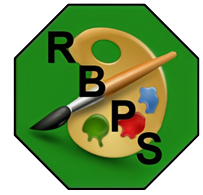Phonics
Phonics at Richard Bonington Primary School
Children at Richard Bonington Primary and Nursery School are taught to read using the fully systematic synthetic phonics program 'Little Wandle Letters and Sounds'.
They are taught to recognise and use GPCs (grapheme-phoneme correspondences) at an aspirational but achievable rate in words, in sentences and then in books.
Our daily phonics lessons, group reading sessions, independent reading and classroom activities guide our children as they learn to decode quickly and effectively and become fluent readers.
We want our children to move from 'learning to read' to 'reading to learn' so that they can engage fully and enthusiastically with our curriculum and the world around them.
Please see our sections for the way we teach phonics.
How can you help your child learn to read?
Each week your child will be taught several new sounds (phonemes) that are made by individual letters or groups of letters (graphemes). They will very quickly build up a wide range of graphemes they are able to identify. They will learn to blend these in order to read whole words. To support your child's reading we ask parents to read regularly with their children at home.
We ask parents to use two types of books with their children:
1) A fully decodable book
This book contains only the phonics your child has learnt at school. Your child will be able to read this book easily, and with confidence, by sounding out and reading every word (except for the high-frequency 'tricky words' like: my, he and they).
Use the guidance inside the front cover to see which new phonemes (sounds) each book focuses on and the graphemes (letters) that represent these sounds.
Support your child as they spot and say each sound within a word, before blending the sounds together. Blending is when we run the sounds together and say the whole word as one.
e.g. t-o-p = top s-t-a-n-d = stand sh-i-p = ship ch-ar-m = charm
The more confident your child becomes in recognising each of the phonemes they know, the more fluent their reading will become and the more they will enjoy the process of reading. Because of this, please make sure that you read each book several times during the week at home. Repeated reading will allow you to discuss what is happening in the book, spot any interesting words and help your child to build their fluency.
2) A book for enjoyment - Sharing Books
We also give our children a quality picture book for you to read to them. This book is used to support a love of reading and an enjoyment of sharing stories. Your child will not be able to read this book themselves.
Find a quiet moment to share this book together. Talk about the parts they like, make predictions and relate the story to other stories they have read in the past. How is it the same? How is it different?
Most importantly, show your child how to love reading and help them to enjoy this vital life-skill.
Phase 2 sounds taught in Reception Autumn 1
This video will help you to support your child with their pronunciation when reading graphemes within words.
Phase 2 sounds taught in Reception Autumn 2
This video shows you how to support your child with their pronunciation when reading new graphemes within words.
Phase 3 sounds taught in Reception Spring 1
This video will help you to support your child with their pronunciation when reading the vowel digraphs and trigraphs within words.
